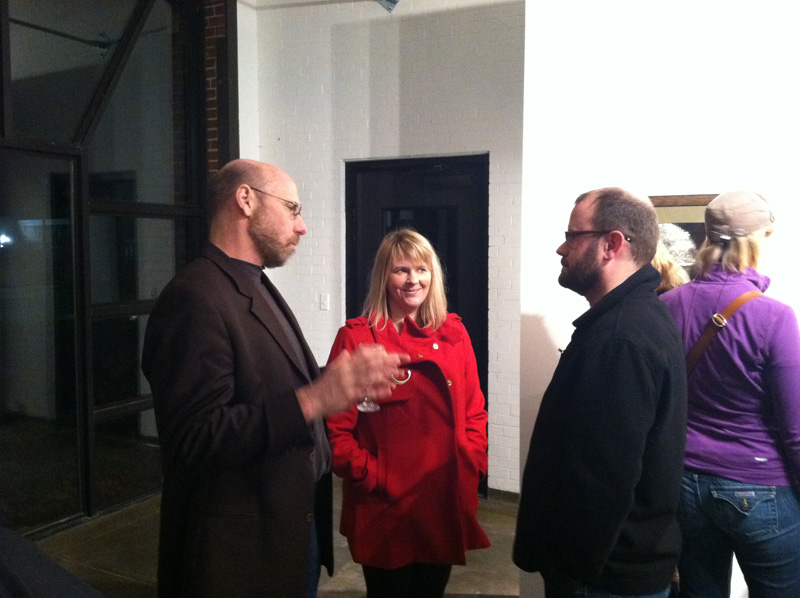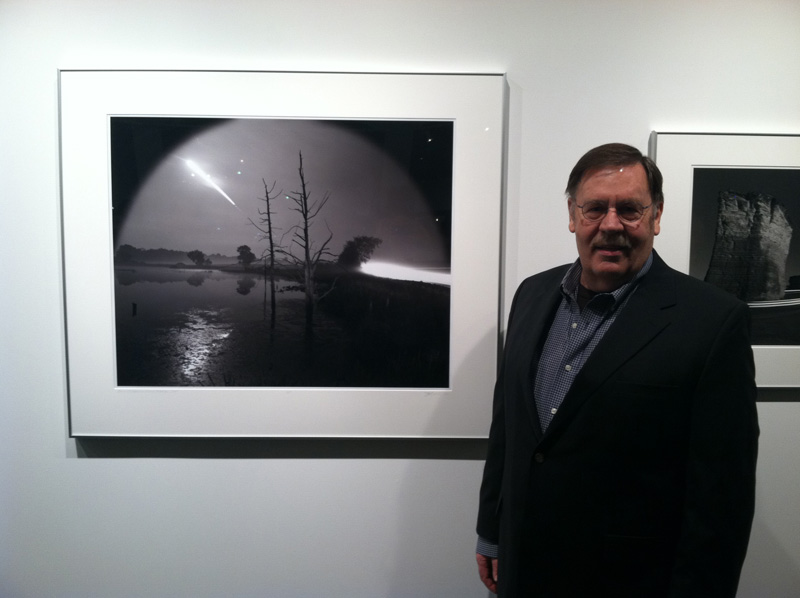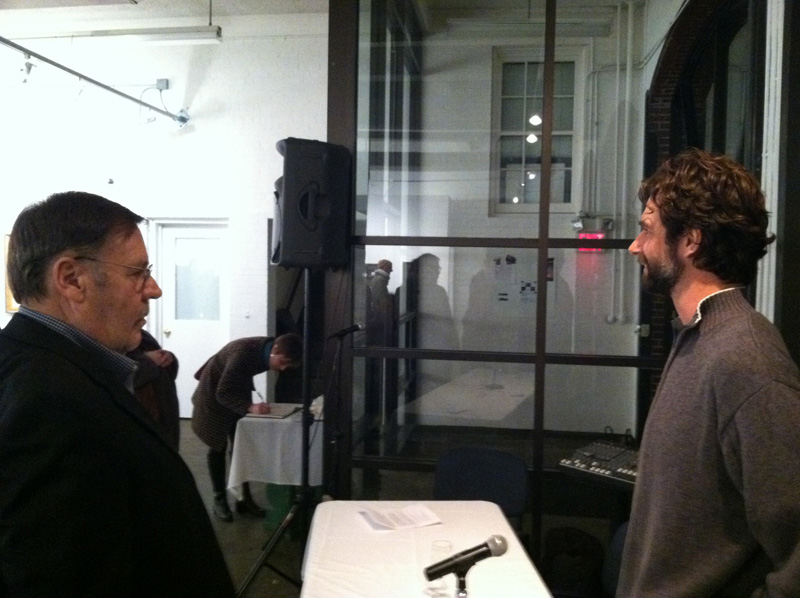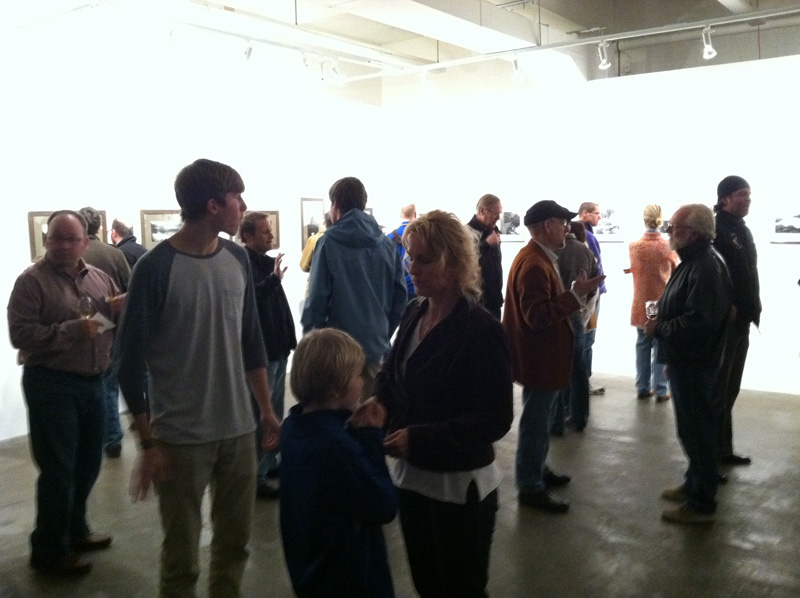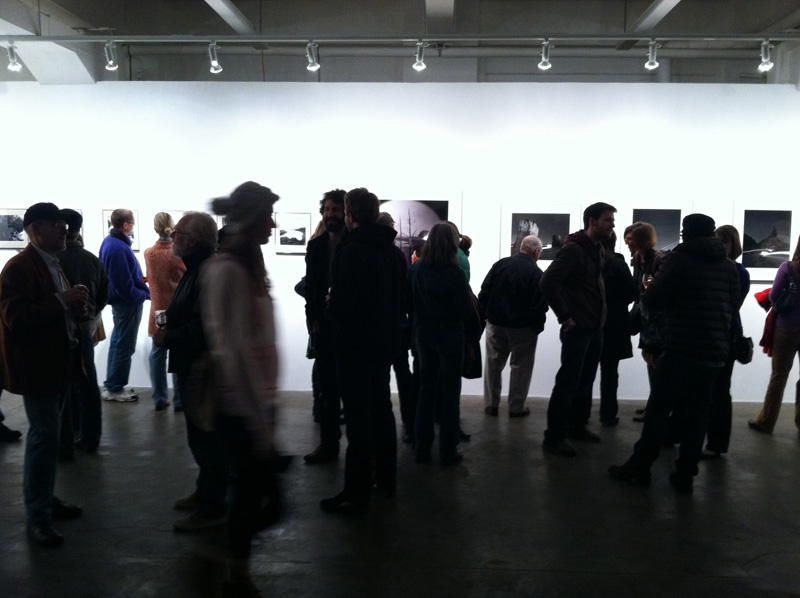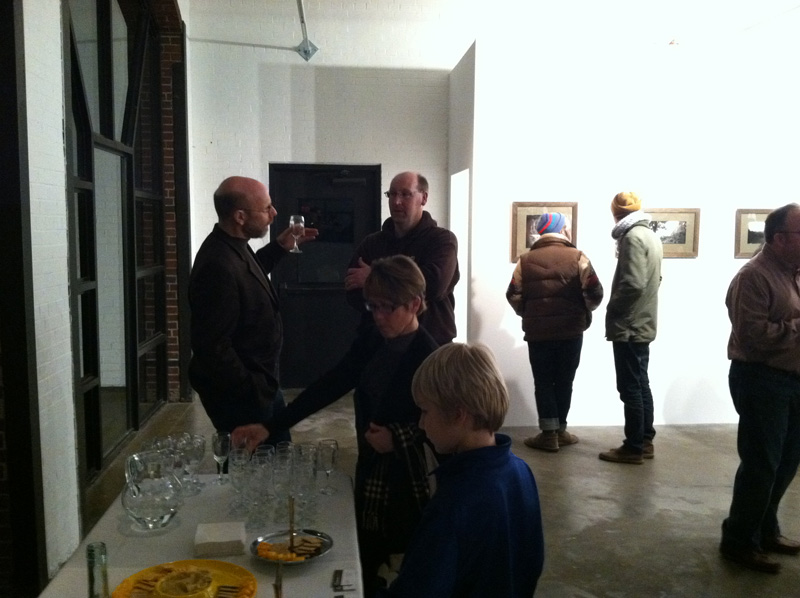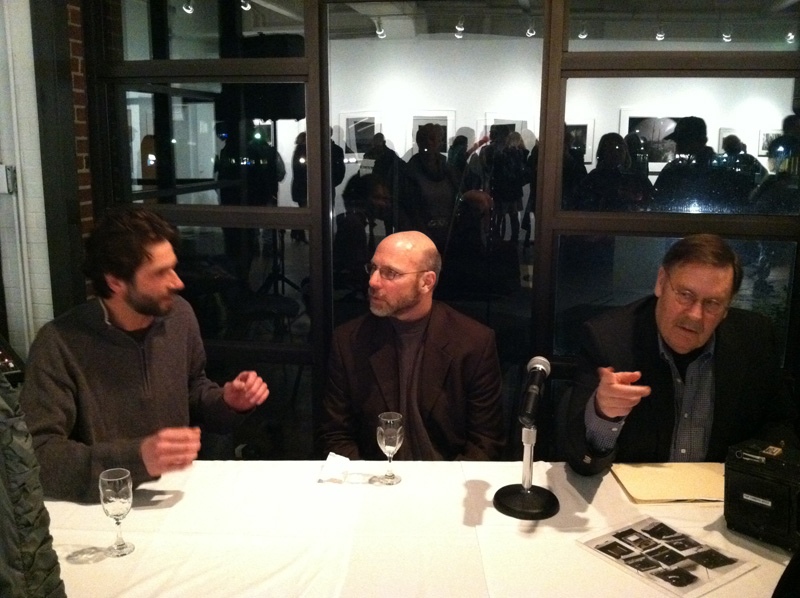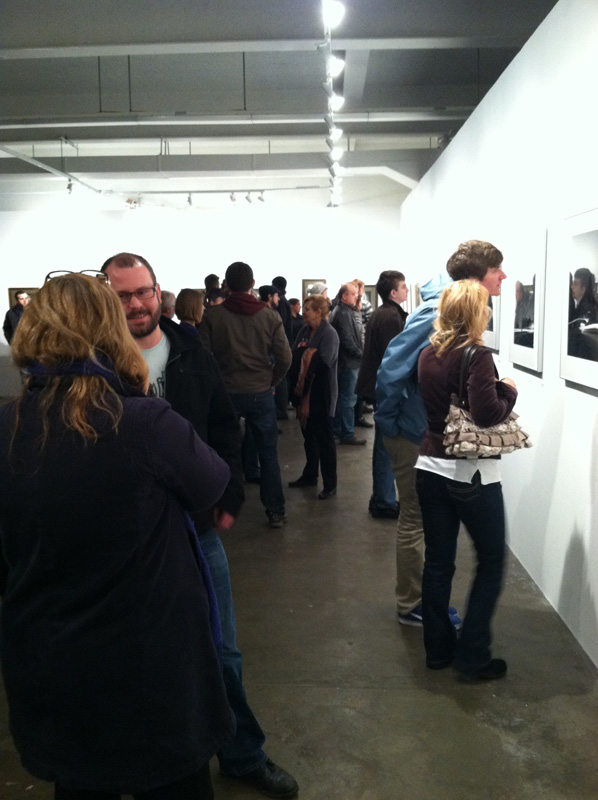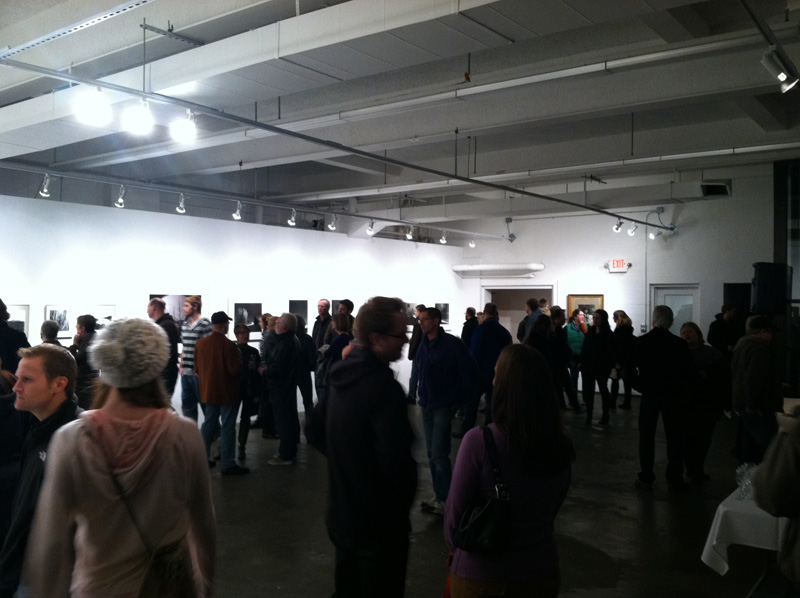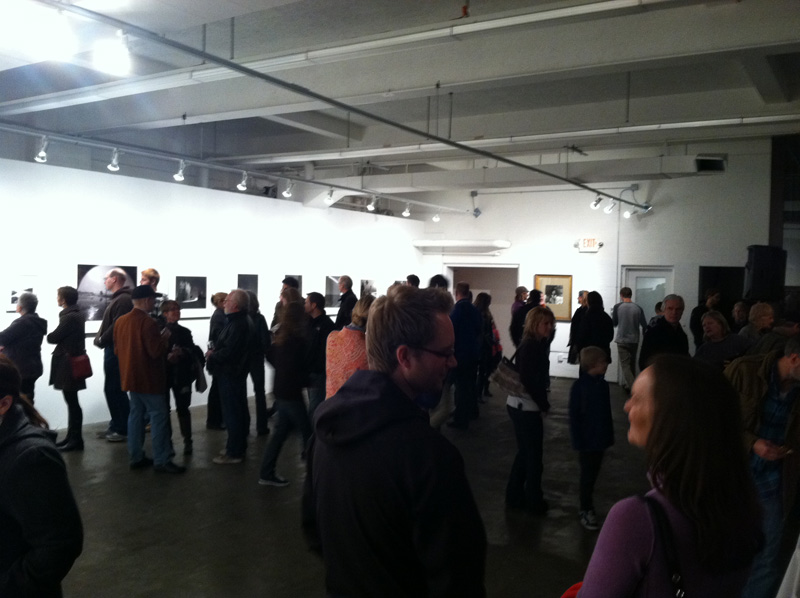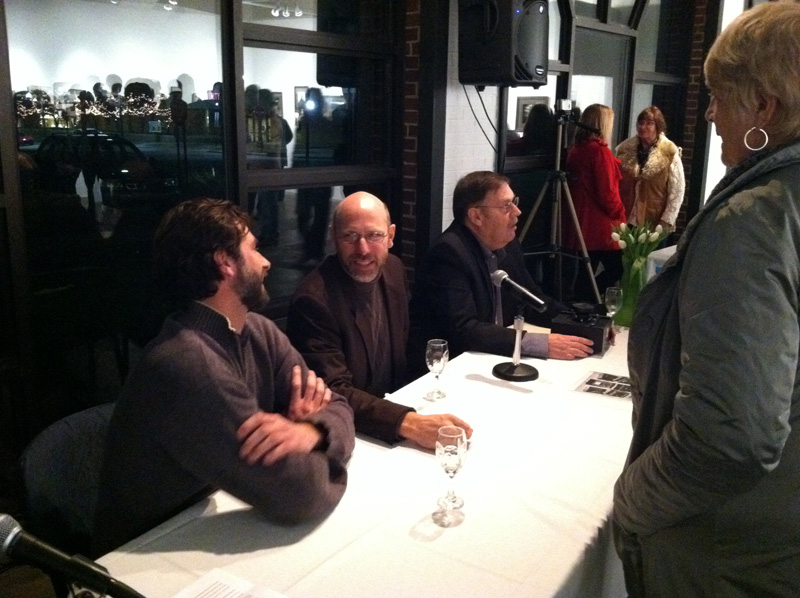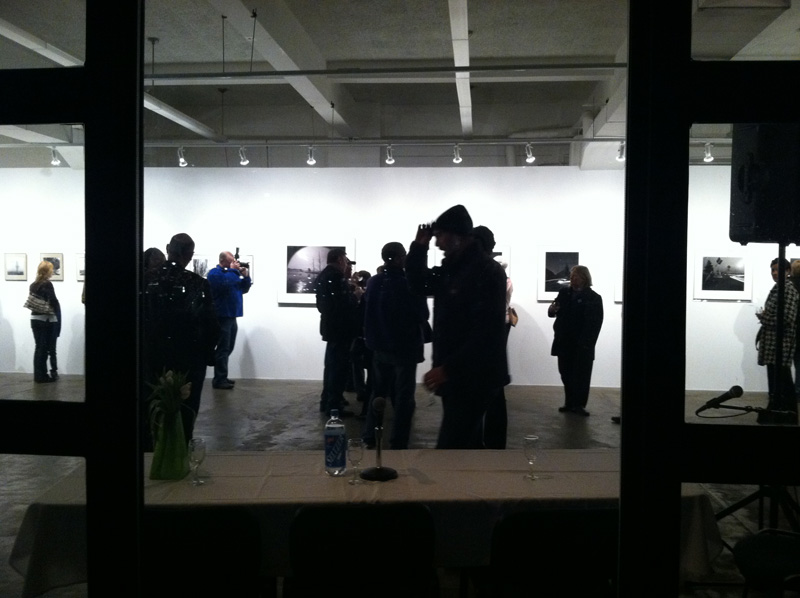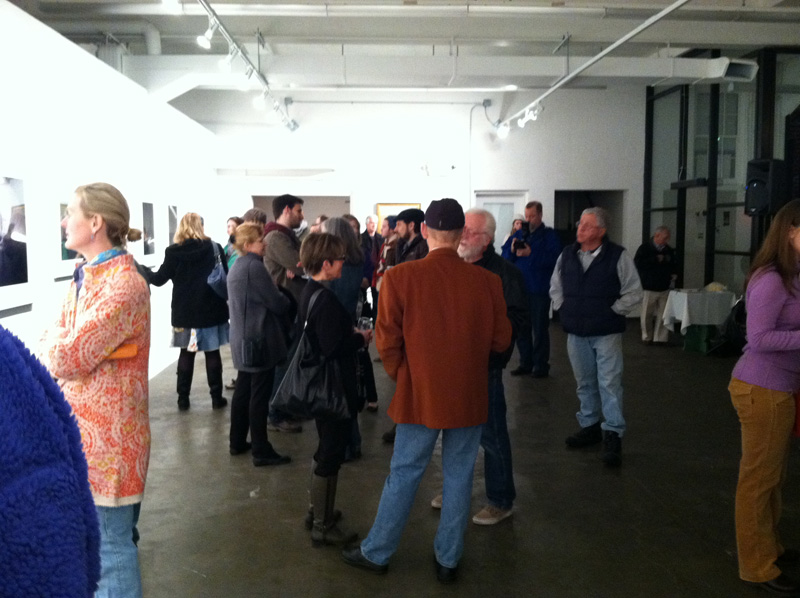ONCE UPON A TIME THERE WAS SILVER - PHOTOGRAPHS BY JOHN M. CARNEY, STEVE NELSON, MARC A. HOEKSEMA
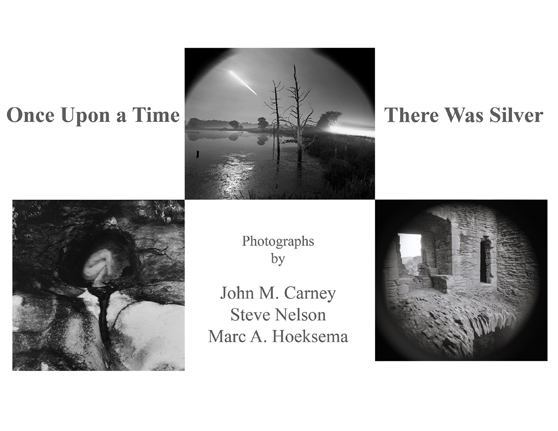
Very Special Thanks to the Sponsor of This Show:
GAZILLION&ONE - www.gazillion1.com
ARTIST STATEMENT
JOHN M. CARNEY
Night Light is an ongoing exploration of traces left by the astronomical and human illumination of landscapes in the dark hours. Stephen Hawking writes about the psychological arrow of time, "This is the direction in which we feel time passes, the direction in which we remember the past but not the future." Indeed, time as commonly conceived is a purely psychological construct, an illusion of the mind, a figment of our imaginations. Real time, simply put, is merely another aspect of space, the fourth dimension. As Hawking says, "Imaginary time is really the real time," and these photographs endeavor to depict this tricky reality - that space & time are one.
Copyright © 2007 John M. Carney
ARTIST STATEMENT
STEVE NELSON
"The Dissolution Series" By Steve Nelson
I am interested in exploring narrative images that illuminate relationships between past and present in the vernacular landscape. From 2000 to 2004 I made several trips to the British Isles to photograph landscapes of "The Dissolution" where I was drawn to 'timeless' places that bare evidence of centuries of human presence. I was drawn to architectural fragments and landforms that speak to the human and natural forces of change. From this experience I was compelled to begin this series of photographs that probe the evidence of change by dissolving the boundaries between physical element of form and metaphysical qualities of light, space, and time. Evident in the landscape throughout Great Britain are the ruins of over 6oo 'dissolved' abbeys. These structures were abandoned after "The Dissolution" of the monasteries ordered by Henry the Eighth during the 15th Century. These structures often 'frame' the surrounding landscapes creating an experience of seeing 'through' the ruins much like we see through a camera view finder. These ruined structures were once rooms with a vaulted ceiling, or cameras by definition. The "dissolution" echoes in the narrative of their forms, and from their shadows photography was invented.
My photographs are a result of an exploration of personal invention within the photo/mechanical processes. I explore various optical aberrations through the use of constructed homemade cameras that combine vintage lenses with various current film formats. These invented cameras produce dissolving images because they push the range of their intended optics, and often yield unexpected flares, or 'ghost' within a circular or panoramic image format. Through the evolution of the construction and trial exposure methods I feel a connection to a spirit of invention and discovery and a connection to the early practitioners and inventors of photography.
Time and space are both specific, and at the same time endless. My subjects echo the specific and endless qualities through combining decaying and enduring forms within fading frames and dissolving light. The images I make blur distinctions of time and space; between past and present.
Steve Nelson serves as chairperson and Associate Professor in the Department of Art and Art History at Hope College in Holland, Michigan. He has taught photography at Hope College since 1989. He has preformed the role of preparatory of exhibition installation for the DePree Art Center Gallery where in 1997 he organize an international exhibition Meta-Physics: Crossing Boundaries in Contemporary Photography. He has taught a 19th C history of photography course, The Golden Age of British Photography, during May Term in Great Britain. His photographs have been exhibited widely including solo and group exhibitions in Chicago and New York.
www.stevenelson.visualserver.com/
ARTIST STATEMENT
MARC A. HOEKSEMA
Why B&W?
Why us?
How does photography relate to painting?
With the digital age already entrenched in our lives, it is important to be reminded of the techniques of the past. As most photographs are printed these days by "pressing print" the classic technique of producing the Gelatin Silver print is slipping into the past. As the dominant form of printing technique in the twentieth century, the likes of Ansel Adams, Edward Weston, and Minor White created fine art photography which has shaped many visions of today. Classic images produced on film and printed by hand in a darkroom can take hours to perfect and produce an image that is difficult to replicate using other methods. The simple fact of the "hands on" experience used to create such works of art yields a value which is not present in other forms of printing.
Photography has a rich history in art, originating as camera obscura turning three dimensional subjects into two dimensional form for viewing and painting. Following the use as a viewing tool, light sensitive materials including silver compounds were created and photography was born!
As a 1991 graduate of Hope College I went to seek out my professor Steve Nelson to see if he would be interested in sharing his work in an exhibit with myself as a kind of lineage show. While we met I asked a suggestion for a third party to exhibit and John Carney, Steve's former professor from Western Michigan University, was his immediate response. The lineage complete! John Carney's work is amazing, images taken of light falling from the night sky and the streets as passers by light up the landscape. Steve Nelson's work is fantastic, with an earthy feeling documenting historical sights in an abstract style that engages the viewer to look deeper into his work. I am focusing on the human/ landscape series for this exhibit, presenting some images which have finally made it to print form. Its exciting that the three of us have differing subject matter all presented in Gelatin Silver prints.
www.hoeksemaphoto.com/
The Fire Barn Gallery(18 North 5th Street, Grand Haven), hosted by Artwalk and the Grand Haven Main Street DDA, is announcing its latest show "Once Upon a Time There Was Silver".
Chris Protas, who is a painter as well as director and curator of the gallery, asked friend and local photographer Marc Hoeksema to choose photographers for the newest Fire Barn Gallery exhibit. The two curators discuss the vision of the show and the artists involved:
Chris: Why did you choose these artists for this show?
Marc: Steve was my professor in college at Hope. I always appreciated the imagery that he produced. His hands-on creative approach to making photographs on film - made with cameras he built or modified - gave the way the images turned out their own look. The equipment he built physically shaped the images he made.
C: In what way?
M: He builds his own box or casing for the film, and little imperfections add to the uniqueness of every image he takes, as opposed to taking a picture with a manufactured camera. In a way this gives it an organic quality. Making equipment fits into the organic groove of his subject matter. There's a relationship between how he makes his cameras and the subject he chooses.
John was Steve's suggestion. He was Steve's professor and one of his influences. As soon as I saw John's work I loved it. I loved the fact that John taught Steve and Steve taught me. Their work is very different but they share some similarities.
C: Can you describe some of those similarities?
M: In the body of work in this show they both are documenting places in the landscape… they also both document landscapes with the influences that humans have had on the landscapes.
C: What about their differences?
M: John has more sharp linear patterns, more defined patterning of light. Its sharper and more spectral.
Steve has a softer quality, rolls his landscapes together, melds them together with soft light situations and soft undulating structures that are melting into the landscape.
C: Why did you choose black and white for this show?
M: Because black and white has been my main interest in photography since I started. I wanted to have a clean, cohesive show. I like the simplicity you get from black and white. Its the oldest form of photography. In contrast to the digital revolution I wanted to have a show that showed the historical process of photography.
C: What are your thoughts on how it relates to painting?
M: When I take a picture, I think of making a photo sort of like painting with light. What you're doing is capturing light - hopefully how you want to. You can consider the movement of the subject and the movement of the light, and how it relates to the image. When you take a time lapse image, what you see isn't what you get. You have to envision the movement of the sky or the movement of the water, or whatever else is in motion, for instance people. Because its all going to blend together into a final image - an image that was never seen by the human eye.
C: Before Photography the only way to make an image was by hand, either a drawing or a painting. Do you think the first photographers were trying to emulate paintings?
M: I don't know - I think it was more of an experimental form of creating a different type of image. It's another way of capturing an image.
John M. Carney taught at Western Michigan University at Kalamazoo for 34 years before retiring as Professor Emeritus of Art in 2000 to pursue the practice of art full time. Carney has received many prestigious awards including a Michigan Council for the Arts Creative Artist Grant, six Ford Foundation/WMU Faculty Enrichment Grants, four WMU Faculty Research and Creativity Activity Fund awards, and four Sabbatical Leave grants. His photographs have been exhibited throughout the country and his work is held in numerous private, corporate and institutional collections.
Steve Nelson serves as chairperson and Associate Professor in the Department of Art and Art History at Hope College in Holland, Michigan where he has taught photography since 1989. His photographs have been exhibited widely, including solo and group exhibitions in Chicago and New York.
Marc A. Hoeksema has taught at Hope College and has exhibited at the Muskegon Museum of Art and many galleries regularly in West Michigan for the last 2 decades.
The show opens Thursday, March 1st, 6-9pm and will include a gallery talk by the artists. The work will be on view from March 2nd to 24th. Gallery open Wed. Fri. and Sat. from 12-6pm.
Images
Opening
Media
- THREE GENERATIONS OF MENTORS DISPLAY THEIR WORK IN NEWEST EXHIBIT AT THE FIRE BARN GALLERY~ KRISTIN AUSTIN - ON THE TOWN
- THE SKEETOWN SIX: THINGS TO DO THIS WEEK~ LISHA ARINO - THE MUSKEGON CHRONICLE
- 'ONCE UPON A TIME THERE WAS SILVER' PHOTOGRAPHY EXHIBITION AT FIRE BARN GALLERY~ WZZM 13 NEWS STAFF
- ONCE UPON A TIME THERE WAS SILVER (IMAGES)~ DAVE JOHNSON



